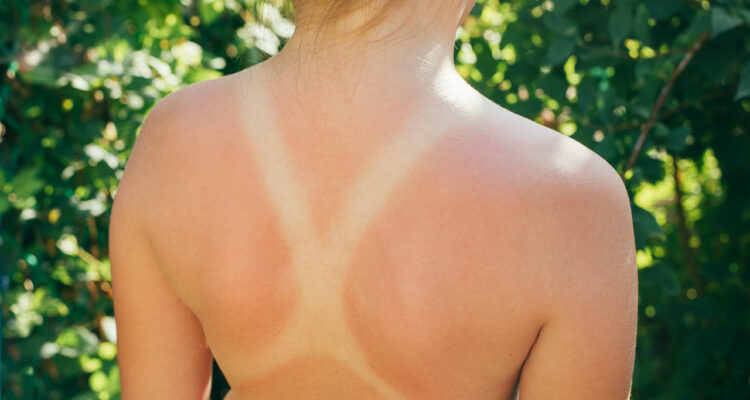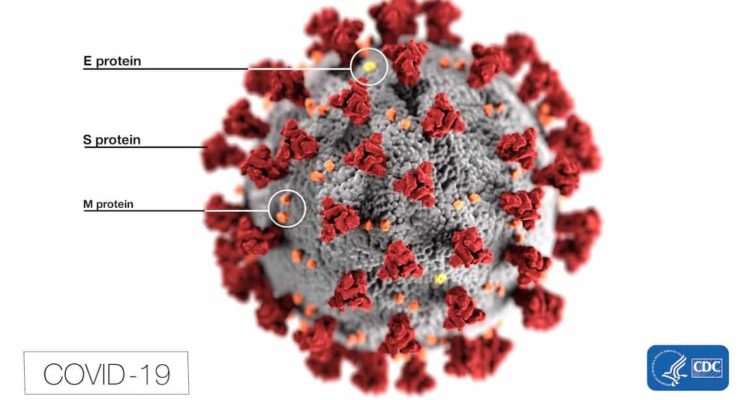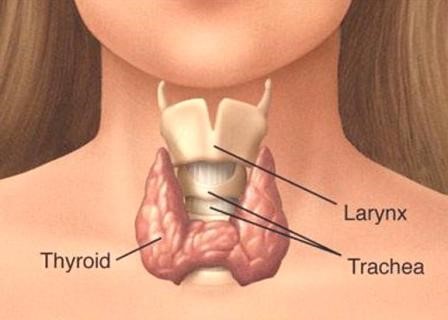
Sunburn
Every year at least a third of the U.S. population gets reminded that surfing the UV waves can burn. Quite nastily if you are genetically predisposed with a melanin deficiency; white, blonde and blue-eyed. UV light has three flavors A, B and C. Unless you are an astronaut, you can discount UVC since its short wavelengths are high energy but almost completely absorbed by the earth’s ozone layer before it reaches the surface.
UVA or UV “Age”, has the longest wavelength but the least energy. The longer wavelength allows it to penetrate deeper into the skin where free radicals are generated. The free radicals break down the elastin fibers that make the skin rubbery and eventually this leads to skin wrinkles and thinning. UVA also disrupts the small blood vessels causing the dark skin blemishes that come with older age called liver spots. Other signs of photoaging are solar lentigines, spider veins, easy bruising and crusty, scaly precancerous lesions called actinic keratoses.

UVB or UV “Burn” is higher in energy than A but has less depth of penetration affecting the top layer of cells primarily. UVB’s radiating generates enough energy to cause cellular DNA damage leading to cell death and the “delayed” immune response a few hours after the sun exposure which is when the sunburn starts to appear. The release of inflammatory mediators causes the redness, swelling, pain and itching. If the exposure is long and intense enough to reach the deeper dermis layer blistering occurs.
Luckily as the summer months go by the body adapts as the UV radiation causes the melanocytes in the epidermis layer of the skin to produce melanin which leads to the darkening or tanning of the exposed skin areas. The melanin in the skin absorbs the energy from UV light and then helps dissipate it off as heat thereby reducing the DNA damage and chance of sunburn to future equivalent amounts of sun exposure.
Treatment
- Hydration.
- Cool bath with 2 oz of baking powder or cool damp towels.
- Plenty of moisturizer with aloe vera or Aveeno containing colloidal oatmeal reapplying frequently. Best practice to apply after a cool bath and soft pat dry of the skin dry leaving a little surface moisture to seal in.
- Advil or Aleve as an anti-inflammatory and pain reliever.
- Hydrocortisone topically to calm the inflammation and itch/pain or an antihistamine like Benadryl cream topically or tablet orally.
- If blistering occurs, it is best to leave them intact since it provides a sterile covering for the repairing skin below that is more susceptible to infection. Vaseline or petroleum is fine for covering ruptured blisters.
- For severe sunburn that is very uncomfortable, your primary care provider can administer a steroid injection or prescribe a steroid to take orally.
- Avoid further UV exposure which would only increase the damage and inflammation.
- Do not apply any benzocaine, lidocaine or antibiotic ointments which can irritate the skin more.
Prevention
- Clothing. Although covering up all potentially exposed areas with long sleeves, long pants and gloves, in Florida it is not always practical. The tighter the weave the less the UV light will penetrate to the skin. Some clothing comes with a measured UVP (ultraviolet protection factor) from 15 to 50 (50 means about 2% or 1/50th of the UV light gets through). A hat is important, and it is best to have a wide brim hat extending out at least three inches around the head. Baseball caps and visors do not protect the crucial areas of the ears and back of the neck.
- Eyewear to protect the retinae from UV damage and the lens from developing a cataract. Most sunglasses have UV protection but darker lenses does not necessarily mean they offer better protection form UV light since UV light is invisible to the eye. Also, when driving long distances consider that the front windshield has protection but the side windows and the sunroof typically do not so you can still burn in the car.
- Sunscreen. I will keep it simple: Use SPF 30. Waterproof if possible and do not use combination products like sunscreen plus insect repellant, cosmetic or moisturizer. Put sunscreen on first 15-30 minutes before going out. Then reapply every two hours. Zinc and Titanium oxide work great since they reflect the light instead of absorbing it like most sunscreens for a more complete UV block. Think nose and ears for these products and they are great for sensitive skin as they do not cause skin irritation. DON’T forget the lips. SPF lip balm is a sun worshipping must.
Mosquitos, Gnats, Yellow (Deer) Flies and other nasty flying mini-vampires

Silent menacing flying creatures whose mission is to terrorize us all summer long. Itch, scratch, itch. Damn the tiny ankle bitters. They like your blood and find it from the CO2 it releases. They are also attracted to darker colors, especially red, and lactic acid from sweat. Alcohol can increase the skins CO2 and some soap and perfume scent chemicals also attract them.
Why the itch? Blame your immune system it is not an allergy. The bug saliva produces a localized foreign body reaction from your immune system which releases histamines and other immune mediators causing the localized swelling (bump), reddening and the itch or pain.
Although mosquitoes can carry nasty viruses like dengue, Malaria, and yellow fever here in North Florida the one of concern is a much milder virus called West Nile Virus. It can cause a low-grade fever, muscle aches, headache, and fatigue for a few to several days. Luckily, it is self-limited. There is no specific treatment for it so hydration, rest, nutrition and something for the fever and aches is the typical treatment. North Florida has sentinel chickens that we use to monitor for it and infection control sends out a public alert when it is around.
Prevention
- Wear light colored clothing and cover up the arms and legs. The thicker the better since the critters can bite through thin clothing. You can buy clothing with insect repellant impregnated and it does work well usually lasting 70-100 washes. If you are a fisherman or work outside a lot you may want to consider getting some or having your favorites digs treated.
- Insect repellant with DEET or picaridin. 30% DEET works and lasts up to 4-5 hours and the sustained-release, Ultrathon, up to 12 hours. Put it on after sunscreen. 20% picaridin is not as oily as DEET and does not have its odor and, also last 4-5 hours. It is as effective as DEET for mosquitoes, gnats and deer flies but may not work as well for ticks. Do not use combination products containing both ingredients. Skin So Soft lotion works well for gnats and mosquitoes and the “natural” products containing lemon eucalyptus oil works okay for mosquitos.
- Get rid of standing water around your home where they breed and avoid going outside after dusk when they are most active feeding. Bug zappers are not effective and kill good insects that eat mosquitos and their larvae. Ultrasounds are also ineffective. Outdoor mists work well if it is not too windy and the oil candles like eucalyptus or citronella can help in a small area where the air is still.
Treatment
- Try not to rub or scratch. This will increase the inflammation and spread the saliva further into the tissue.
- First step is a quick light swipe of alcohol to clean and then ice to decrease the inflammatory response.
- Topical Benadryl or 1% Hydrocortisone over the counter cream works great but if you have several bites you may want to take the Benadryl orally.
- If you have a more severe localized reaction you may want to get your primary care to give you a prescription of a medium potency topical steroid cream which is great for the itch and swelling.
- Rarely, a person can develop an allergy to the saliva proteins and can get a reaction with a much larger localized swelling of several inches, intense itch, and a low-grade fever. Generalized hives can occur as well. The best treatment for this is oral Benadryl but if breathing trouble presents an immediate trip to an emergency room is required.



